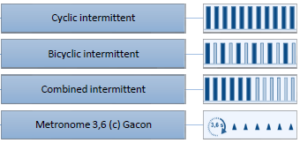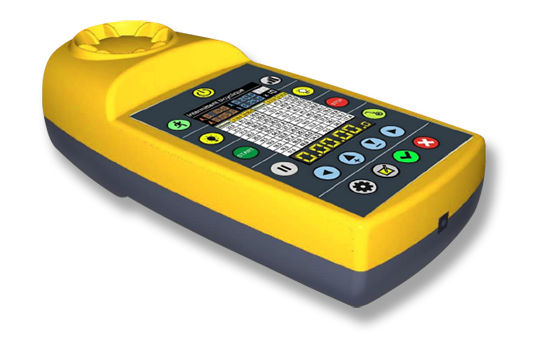The intermittent

Intermittent MAS diagram
We owe it to P.O Astrand, a Swedish physiologist and world authority. Geroges Gacon was seduced by his experiments of 1960, and he had the chance to meet him during a symposium in ST ETIENNE in 1977. He discussed with him the practicalities of his innovation. He has successfully applied them to his middle-distance runners.
This type of training aims to improve aerobic power.
It is a matter of subjecting the oxygen transport and utilization system to an optimal or even maximum load. The originality of such a process (composed of exercises of short duration interspersed with short recoveries) is to work at VO2 max while limiting the intense production of lactic acid. It allows to have a contribution of O2 equal to the needs required by the muscles in activity what allows a realization in stable state.
- The duration of the work sequences is from 5secs to 60 secs. Thus the active muscles do not lack of oxygen. Muscles have 2 sources of O2 supply: the circulation and the intramuscular reserves present in a protein: myoglobin.
- The duration of the recovery sequences is short so that the degree of demand on VO2 max does not fall and is maintained at an optimal level. But it is also necessary that the myoglobin of the muscles can be supplied with oxygen.
- The total duration (or number of sequences) must be long enough to properly stimulate the aerobic system, hence the minimum value of 6 to 8 minutes.
- The exercise block must be performed in a stable state. The time spent in these conditions must be in relation to the sport discipline and the level of the athlete, which leads to lengthen the minimum time of the 3rd condition. 10 to 12 minutes seems to be a good compromise.
- The intensity of the work (speed) is calculated according to the results obtained by the athlete in a MAS test (Navette, 45/15 fit, Vameval …). The maximum speed reached during the test is the 100% reference. The advantage of the 45/15 fit test is that its results can be used directly without extrapolation. This is not the case with a continuous test (Vameval type) where the terminal speed achieved is not high enough and must be increased (110 to 120%).
During intermittent exercises, this intensity is translated into distance to be covered for a given time.
The Sportbeeper has an odometer (tab-odometer). It is a real assistant. It is a real assistant: It :
- has all the MAS tests (Vameval shuttle, Gacon 45-15fit),
- Calculates the speed for you to travel on the ground,
- Helps to arrange your cones at the right distances.
Intermittent exercises also offer the advantage of being able to introduce sequences of support strength training, which is not possible in intervall-training.
In the Sportbeeper training menu, you can set up an infinite number of intermittent exercises with 4 different forms.






